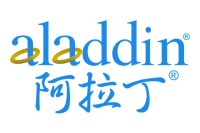The substrate specificity of a protein tyrosine kinase in viva reflects both the intrinsic specificity of the kinase catalytic domain and the effective local concentrations of protein substrates. In many cases, the distribution of potential substrates is mfluenced by interactions with noncatalytic regions of the enzymes such as autophosphorylation sites, Src homology 2 (SH2) domains, and Src homology 3 (SH3) domains. These interactions may recruit substrates to the vicinity of the tyrosme kinase catalytic domain (1 ,2 ). For example, binding of the SH2 domains of phosphohpase Cγl (PLCγl) to autophosphorylation sites on the activated eptdermal growth-factor receptor tyrosme kinase results in phosphorylation and activation of PLCγl (3 ). Nonreceptor tyrosine kinases such as Src and Abl are also targeted to subsets of cellular proteins by virtue of specific interactions with their SH2 and SH3 domains. The Src SH3 domain recognizes a proline-rich motif in an actin filament-assoctated protein of 110 KDa; this interaction leads to phosphorylation of the protein by the catalytic domain of Src (4 ). Similarly, the SH2 domain of the Abl tyrosine kinase is required for hyperphosphorylation of rts substrate p130CAS (5 ). Substitutions of SH2 domains in nonreceptor tyrosme kinases with heterologous SH2 domains result in the phosphorylation of alternative substrates in vivo (6 ).






